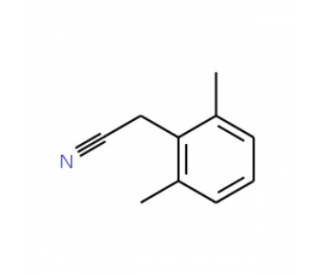详细说明
Species Reactivity
Mouse
Specificity
Detects mouse EpCAM/TROP-1 in flow cytometry.
Source
Recombinant Monoclonal Rat IgG 2A Clone # G8.8R
Purification
Protein A or G purified from cell culture supernatant
Immunogen
TE-71 Thymic epithelial cell line
Formulation
Supplied in a saline solution containing BSA and Sodium Azide.
Label
Alexa Fluor 647
Applications
Recommended
ConcentrationSample
Flow Cytometry
5 µL/10 6 cells
See below
Please Note: Optimal dilutions should be determined by each laboratory for each application. are available in the Technical Information section on our website.
Data Examples
Flow Cytometry | Detection of EpCAM/TROP‑1 in 4T1 Mouse Cell Line by Flow Cytometry. 4T1 mouse breast cancer cell line was stained with Rat Anti-Mouse EpCAM/TROP‑1 Alexa Fluor® 647‑conjugated Monoclonal Antibody (Catalog # FAB8998R, filled histogram) or isotype control antibody (Catalog # , open histogram). View our protocol for . |
Preparation and Storage
Shipping
The product is shipped with polar packs. Upon receipt, store it immediately at the temperature recommended below.
Stability & Storage
Protect from light. Do not freeze.
12 months from date of receipt, 2 to 8 °C as supplied.
Background: EpCAM/TROP1
Epithelial Cellular Adhesion Molecule (EpCAM), also known as ECD326 and TROP-1 is a 36-41 kDa member of the TROP family of meolcules (1, 2). It is a type I transmembrane glycoprotein that is found on embryonic stem cells and adult non-squamous epithelium such as (respiratory) psuedostratified, (mammary) cuboid, and (colon) simple columnar epithelium. In mouse, the molecule has also been reported on T cells, Langerhans cells and thymic epithelium. Mature mouse EpCAM is 292 amino acids (aa) in length. It possesses a 243 aa extracellular region that contains one thyroglobulin type I domain. Such domains are associated with cathepsin binding and inhibition (2). On the cell surface, EpCAM is reported to participate in TEM (Tetraspanin-enriched microdomain) formation in concert with CD44v6, CD9, ADAM10, Claudin-7 and TS8. It is also noted to form homodimers in- cis and homotetramers in- trans. Although this would suggest the EpCAM acts as an adhesion molecule, in effect it does not, instead acting as a disruptor of the E-Cadherin:cytoskeleton interaction, and thus promoting cell migration (1, 2). The extracellular domain (ECD) of EpCAM undergoes multiple cleavages, principally between Ser200 and Ala210 (3). Cleavage at the Arg80-Arg81 site does not generate a soluble fragment, but rather a disulfide-linked "heterodimer" (3). Cleavage after Gly264 in the juxtamembrane region is followed by secretase cleavage of the transmembrane fragment, generating an ICD that translocates to the nucleus (4). The ECD of mouse EpCAM shares 81% and 90% aa sequence identity with human and rat EpCAM, respectively.
References:
Schnell, U. et al. (2013) Biochim. Biophys. Acta 1828:1989.
Martowicz, A. et al. (2015) Histol. Histopathol. Oct 23:11678 [ePub ahead of print].
Schnell, U. et al. (2013) Biosci. Rep. 33:e00030.
Hachmeister, M. et al. (2013) PLoS ONE 8:e71836.
Long Name:
Epithelial Cell Adhesion Molecule
Entrez Gene IDs:
4072 (Human); 17075 (Mouse)
Alternate Names:
17-1A; 323/A3; ACSTD1; antigen identified by monoclonal AUA1; CD326 antigen; CD326; Cell surface glycoprotein Trop-1; chromosome 4, surface marker (35kD glycoprotein); DIAR5; EGP; EGP-2; EGP314; EGP40; EpCAM; epithelial cell adhesion molecule; Epithelial cell surface antigen; Epithelial glycoprotein 314; Epithelial glycoprotein; ESA; GA733-2; GA733-2EGP34; gp40; hEGP314; HNPCC8; KS 1/4 antigen; KS1/4; KSAHEA125; M1S2; M4S1; M4S1Ly74; Major gastrointestinal tumor-associated protein GA733-2; MIC18MH99; MOC31; TACST-1; TACSTD1; TROP1; TROP1CD326; Tumor-associated calcium signal transducer 1CO-17A











 粤公网安备44196802000105号
粤公网安备44196802000105号